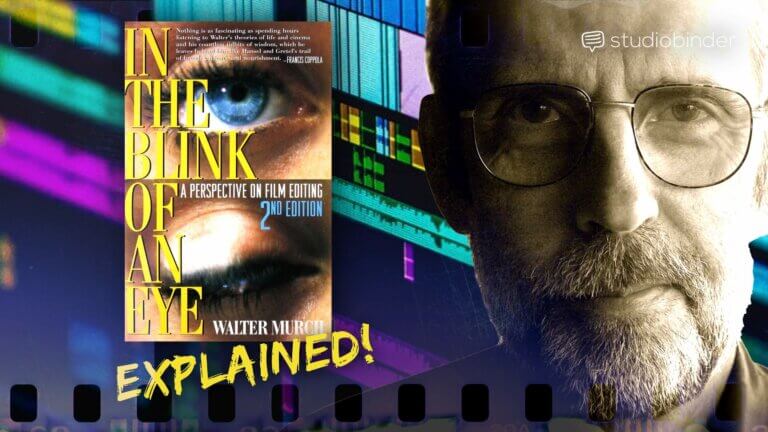You, a production professional, know how to make script sides.The 2nd AD tells you, “Make script sides and distro when they’re done.” But what if you’re responsible for sending script sides to actors and crew? What are sides, exactly, and why are they so important in production? How do you make them? What does distro mean? In this article, we’ll cover how to make script sides like a master. By the end, you’ll be ready to take your productions — and your career — to the next level.Continue reading How to Create Script Sides for Film & TV [with Examples]
We encounter irony every day: in our favorite movies, TV shows, and in our own lives. Most people have a general understanding of irony but there are also a lot of misconceptions about it. For example, were you aware that there are 3 different types of irony?In this article, we're going to define irony in all its variations. Whether you're writing a short story or a screenplay, irony can be a powerful storytelling tool. You'll be able to recognize the different types of irony and understand how they work. The next step is to carry this understanding straight into your…
Here there be dragons, boogeymen, and blood-sucking vampires! Scary stories have frightened and allured audiences for thousands of years. So, whether you’re looking to establish a new form of horror, or riff on an existing genre trope, you’ve come to the right place, because we’re going to break down scary story ideas. Dim the candlelight, turn up the theremin, and sit back as we delve deep into horror writing prompts! Continue reading Scary Story Ideas — 18 Prompts For Horror & Thriller Writers
What is the rule of thirds? The rule of thirds is an effective way to frame the elements in your scene so that the resulting image is much more visually captivating. Like most other filmmaking “rules,” it’s not really a rule at all — more of a golden guideline.It’s also an incredibly easy rule to try: any level photographer or cinematographer can use it. First, let’s define it by showing you some rule of thirds examples, then explore how it’s used in film.Continue reading What is the Rule of Thirds — Definition and Examples
What does pacing mean in the context of storytelling? What makes one story feel fast or another one feel slow? How can pacing be controlled? Throughout this post, we will be answering all of these questions and digging into everything you need to know about narrative pacing. Let’s get started with a definition. Continue reading What is Narrative Pacing — And How to Control It
Planning a video or sequence in a film doesn’t come second nature to most filmmakers. Serious prep is required. Lucky for you, there are tools to make this easier. Laying out your vision in a storyboard is one way to do it. What is a storyboard you may ask? It is a roadmap that will guide your journey from script to screen. To really grasp the benefits of storyboarding, we'll go beyond a simple storyboard definition to explore how filmmakers like Ridley Scott and the Coen Bros. rely on this fundamental process and how easy it will be for you to…
Directors and cinematographers shoot with purpose, as they match their technical shot choices with the intended tone or emotion of the story. Of course, they’re not the only ones making critical choices. Editors’ decisions hugely determine the success of a film. It is up to the editor to assemble every scene, every cut in a scene, to tell the intended emotional truth of the story. It’s a tall order. To alleviate some of this pressure, Oscar-winning editor, Walter Murch, outlined some helpful tools. In his book, In the Blink of an Eye, Walter Murch details The Rule of Six, discussing…
Creating a film is an exciting endeavor, but along the way it’s inevitable to hit logistical aspects that can discourage your ambitions. Film permits, for any filmmaker, can inevitably be one of these obstacles. Can I shoot here? What do I need to do to shoot here? Will I get in trouble? These are all fair worries in the world of filmmaking. Let’s look at the solution to these worries — learning how to get a film permit. Continue reading How to Get a Film Permit — A Step-by-Step Breakdown
If you've ever marveled at the breathtaking landscapes of Pandora in Avatar or the spellbinding battles in The Lord of the Rings, you've witnessed the magic of visual effects. When looking into the nitty-gritty of how these famed visuals are created, filmmakers have utilized a combination of techniques such as CGI and VFX. But what’s the difference between the two?Continue reading VFX vs. CGI vs. SFX — Decoding the Debate
So you’ve finished your story: the primary antagonist has been defeated; the main-plot has been resolved -- but something still feels incomplete. Don’t worry, many writers struggle to find that ever-so-coveted perfect ending. One way to add further resolution to a story’s conclusion is by adding an epilogue. We’re going to show you how to write an epilogue that’s resolute and satisfying, with screenplay examples from Half Nelson, Annie Hall, and more. By the end, you’ll know how to write an epilogue that aids your story not ails it.Continue reading How to Write an Epilogue — Ideas for Crafting a…
![How to Create Script Sides for Film & TV [with Examples] StudioBinder](https://s.studiobinder.com/wp-content/uploads/2024/06/How-to-Create-Script-Sides-for-Film-TV-with-Examples-StudioBinder-768x432.jpg)








